Estimated reading time: 12 minutes
Shelves? Check. Water? Check Rice? Check. Beans? Check. Canned vegetables? Check.
For many people, preparing an emergency food supply ends right about here. Okay, maybe you can add in granola bars, powdered milk, and trail mix as well. However, if you complete your preparations with these items, you are missing the opportunity to store many nutritious survival foods for your family.
Here is a list of often forgotten emergency foods to consider that offer extended shelf life and provide needed calories and nutrients in an emergency.
Want to save this post for later? Click Here to Pin It On Pinterest!
Buckwheat

Not actually a wheat, but a seed, buckwheat is a nutritious and versatile food source that’s often forgotten. It’s packed with essential nutrients like protein, fiber, and antioxidants. You can cook it as a hot cereal, grind it into flour for baking, or use it as a rice substitute. When stored properly, buckwheat can last up to 10 years.
Canned Pumpkin
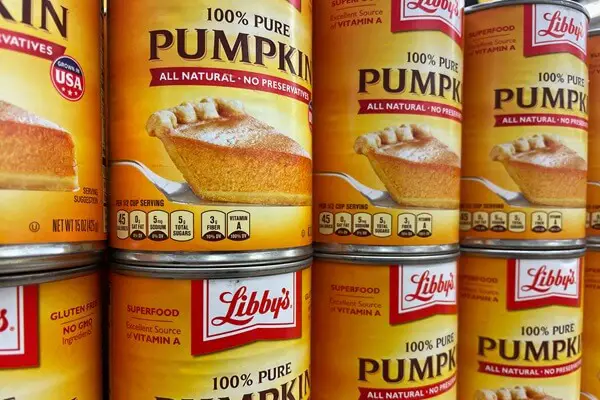
Canned Pumpkin on Shelf Rich in vitamins, minerals, and fiber, canned pumpkin is a nutritious and often overlooked addition to any emergency pantry. It's not just for pies – you can use it to thicken soups and stews, make pumpkin bread, or even as a healthy treat on its own. Most canned pumpkin will last for several years on your shelf.
Canned Sardines
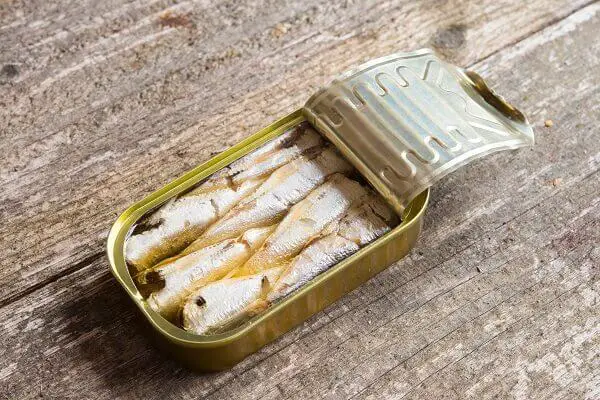
Often overshadowed by their canned seafood cousin, tuna, sardines are a versatile and nutrient-rich addition to your emergency food pantry. High in omega-3 fatty acids and protein, sardines can be eaten straight out of the can or used to add flavor to pasta, salads, or sandwiches. Most canned sardines have a shelf life of around two years.
Canned Tuna

Canned light tuna (which has lower levels of mercury than other types of canned tuna) is an inexpensive, nutritious, and versatile addition to your stockpile. High in protein, you can eat it as-is on crackers, as a sandwich filling, or in a pasta dish. Most canned tuna stays fresh for up to two years. Check the expiration dates on your cans and rotate out as needed.
Chia Seeds
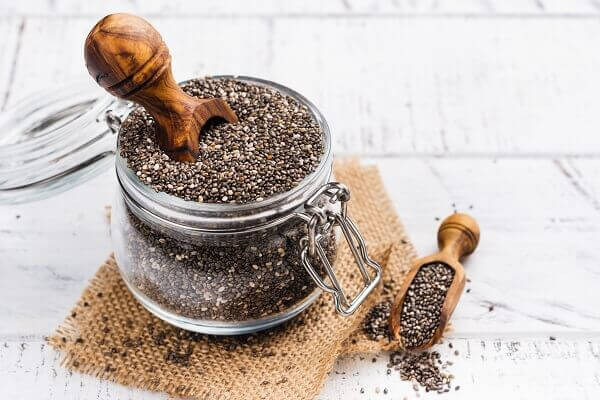
Don’t underestimate these tiny seeds. They are a great source of omega-3 fatty acids, antioxidants, fiber, iron, and calcium. Chia seeds are perfect for long-term storage as they have a shelf life of 4-5 years. To eat, soak them in water to create a gel-like substance that you can add to smoothies or use as an egg replacement in recipes.
Chickpeas

Rich in protein and flavor, dried garbanzo beans have a shelf life of 30 years or even more when stored properly.
Coconut Oil

Coconut oil has a shelf life of more than two years. Solid at room temperature, coconut oil can withstand the high cooking temperatures of a fire in a survival situation. Consider it as a replacement for butter in baking and cooking. A bonus is that you can also use coconut oil for other purposes, such as a skin moisturizer and a hair product.
Couscous
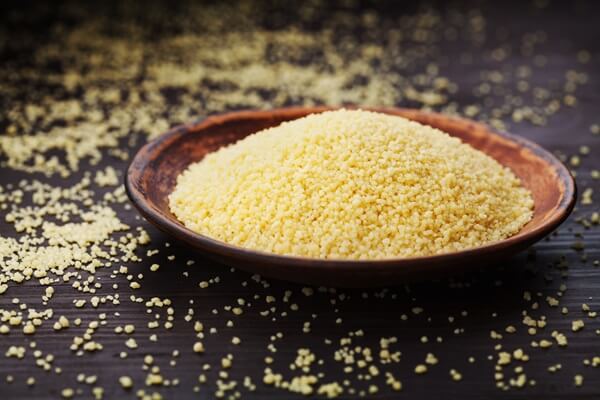
Couscous in Container Often overshadowed by rice and quinoa, couscous is a quick-cooking wheat product that's perfect for emergency food storage. It's high in carbohydrates, providing essential energy, and can be prepared in just minutes by adding boiling water. Store it in airtight containers to keep it fresh for years.
Dehydrated Meat
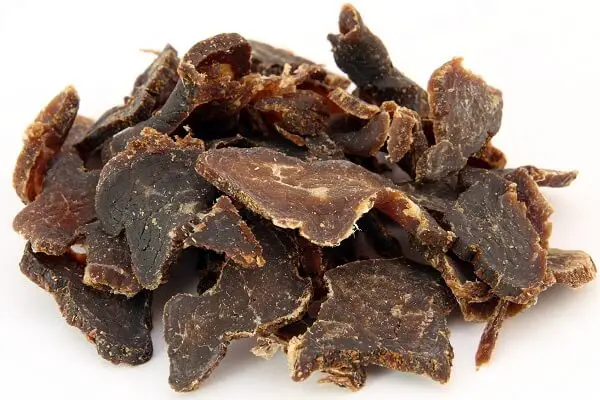
Jerky is a great source of protein and stores easily for long periods in your emergency pantry. You can make your own jerky in the oven, dehydrator, or even over a fire. Here’s how to make beef jerky in a dehydrator. Scroll through the article for the video at the end.
Dried Fruit
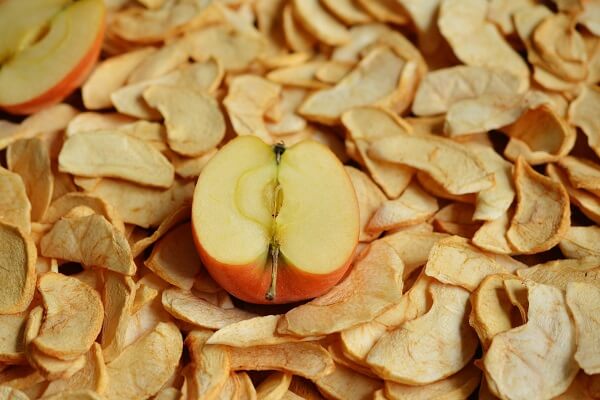
Raisin and dates are only two of the options when considering dried fruits for your emergency pantry. You can dry just about any fruit in your home dehydrator, oven, or even outside in the sunlight. When placed in mylar bags or air-tight containers, most dried fruits store well for up to five years.
Try dried cranberries, figs, cherries, banana chips, apricots, mango slices, plums or blueberries. Here’s a video that shows just how easy it is to dry apple slices in the sun.
Dried Veggies

You may have some canned veggies already in your stockpile, but you might want to consider adding some dehydrated ones as well. Dehydrated carrots, for example, can stay fresh for 20 years, and dried corn can last for 10 years. This video shows how to dehydrate vegetables.
Freeze-dried Yogurt

A delightful surprise in the realm of emergency foods is freeze-dried yogurt. It’s a wonderful source of calcium and probiotics, which are essential for maintaining gut health. When rehydrated with a bit of water, it returns to a yogurt-like texture. Or, you can eat it straight from the bag as a tangy, crunchy snack.
Ghee

This clarified butter of Indian origin is a kitchen staple with an impressive shelf life. With milk solids removed, ghee is less likely to spoil and doesn’t require refrigeration, making it an excellent long-term storage food. It also offers the benefit of being suitable for those with lactose intolerance. You can use it in cooking, baking, or even as a spread.
Kamut

Another often overlooked grain, kamut is easy to digest and can contain 40 percent more protein than modern wheat. Sometimes called the “high-energy grain” because of its high lipid content, kamut is a good choice as a survival food.
Honey

Don’t make the common mistake of thinking honey spoils when it crystallizes over time. To get it back to its liquid state, just warm it and stir it briefly. Honey offers energy boosts and is a good replacement for sugar in a survival pantry.
Lentils

Whole dried lentils (not the split kind) store well for up to five years in air-tight containers. They are high in protein and easy to prepare. Contrary to what you might think, you do not need to presoak dried lentils, so they require less water than other beans.
Millet
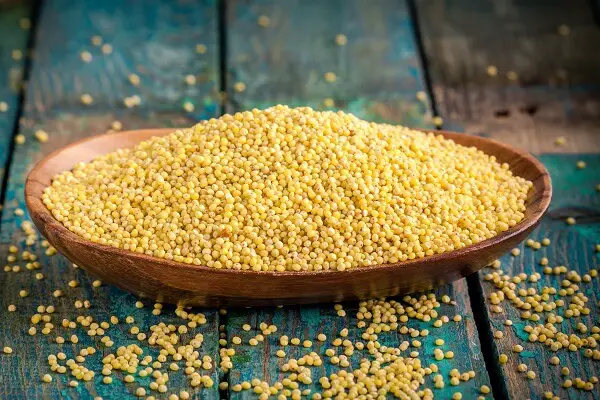
If you want to avoid gluten or just want an alternative to wheat and rice, millet is an excellent choice. Millet provides protein, dietary fiber, healthy fats, vitamin B, potassium, iron, magnesium, calcium, and zinc.
Nut Butters

Peanut butter may already be on your emergency pantry list, but many preppers overlook the benefits of other nut butters. For example, sunbutter (made from sunflower seeds) and almond butter are quick and easy sources of energy and nutrition. They also are excellent for long-term storage. Here are instructions for making sunbutter.
Pemmican
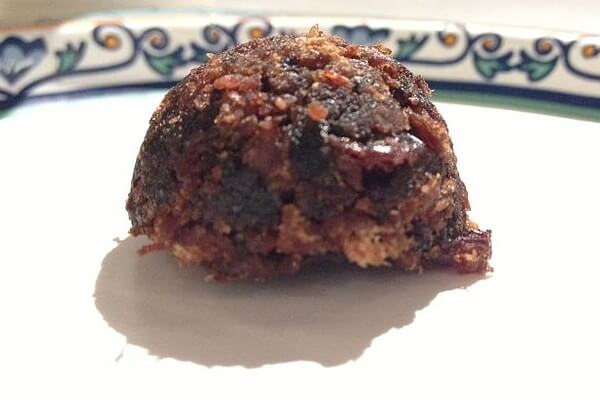
Often referred to as the ultimate survival food, pemmican was invented by Native Americans as a way to preserve venison and buffalo. However, you can use any low-fat dried meat and mix it with fat and berries before molding it into biscuit-sized shapes. Some pemmican is known to have stayed fresh for 50 years! Here’s how to make pemmican.
Powdered Eggs

Powdered Eggs in Bowl A fantastic source of protein, powdered eggs are often overlooked in emergency food planning. They can be used just like regular eggs in cooking and baking, making them a versatile addition to your pantry. With a shelf life of up to 5-10 years when stored properly, they're a practical choice for long-term food storage.
Quinoa

The ancient Incas knew what they were doing when they stored quinoa. This nutritious and filling grain contains eight essential amino acids and eight grams of protein per cup. Store uncooked quinoa in air-tight jars or bags in your pantry for six months or more.
Rolled Oats
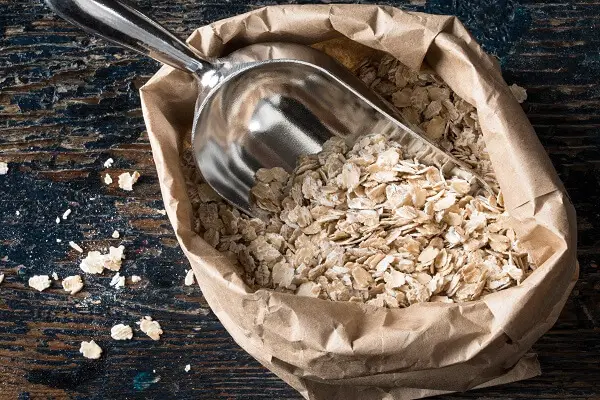
When stored in tight containers that are kept in dry, cool conditions, rolled oats can stay fresh for up to 30 years! Inexpensive and easy to cook, oats offer dietary fiber, iron, and thiamine.
Seaweed
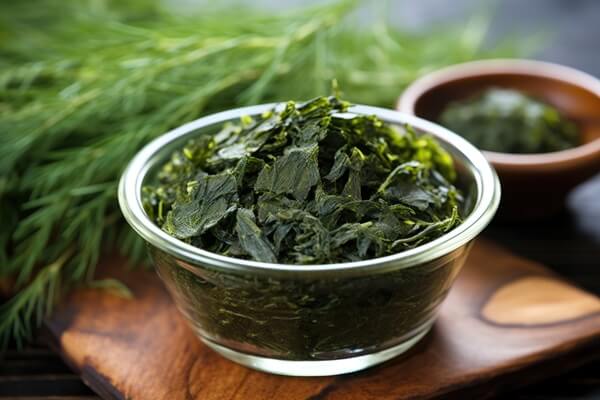
Dried Seaweed Sheets Seaweed isn't just for sushi – it's a nutrient-dense food that's high in vitamins, minerals, and iodine, which is essential for thyroid health. Dried seaweed has a long shelf life and can be eaten as a snack or rehydrated for use in soups and salads.
Now that you have some fresh ideas of what to store in your emergency pantry, here are some other tips.
- Be sure to have a hand-operated can opener available.
- Store a flashlight and batteries nearby so you can find your food in the dark.
- Store at least one gallon of water per family member per day.
- Remember your pets and livestock need food and water too.
- Prepare for baby and toddler nutritional needs.
- An emergency is not the time to experiment with new foods; there will be enough stress. Store foods your family likes.
- Monitor your pantry regularly, checking expiration dates and rotating as needed and watching for any signs of moisture or infestation.
Like this post? Don't Forget to Pin It On Pinterest!


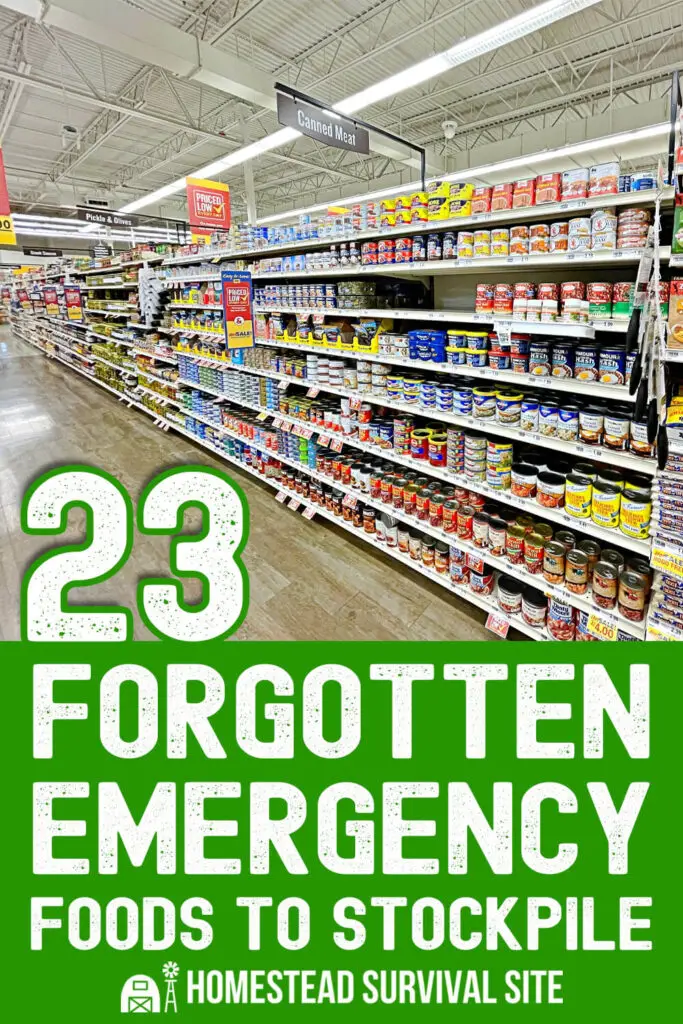
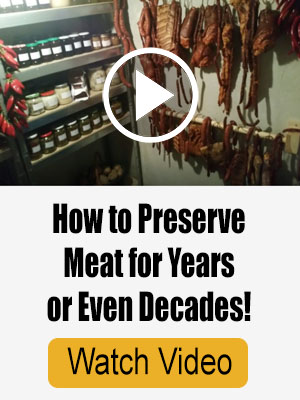
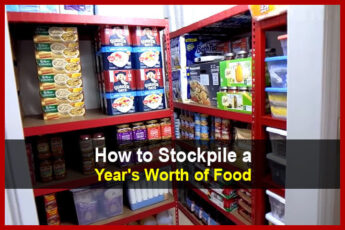


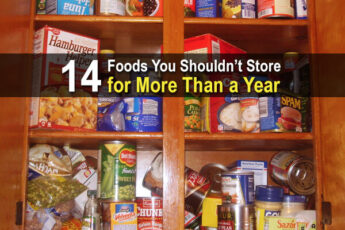


I would suggest that tinned sardines are a really good food to store. They’re incredibly cheap, very healthy and last for years. When shopping, I always pick up a couple of cans to add to the store. Also, pumpkin seeds are easy to store and exceptionally nutritious.
Plus, if the pumpkin seeds are not roasted, you could try growing some. Witu squash of any kind, the whole plant above.ground is edible- flowers, leaves, and even the stem can be boiled up for stock, and of course, the squash.
I have canned tuna, sardines and even anchovies! Some other meats I have are canned corn beef, Vienna sausages, and even spam along with ramen noodles, spaghetti and other pasta.
anchovies are to high in salt for my taste, but to each his own I suppose.
However, I have tuna, sardines, some crab meat, canned prawns and canned salmon amongst other things I have squirrelled away.
Peanut butter has a shelf life of upto 2 years if not opened .Not what I would call a survival food.
Well, I opened a jar of peanut butter a couple weeks ago and it was perfect. By the way, it was 8 years past it’s so called expiration date. Kinda like another jar I opened about 3 months ago that was also “wayyyyy” past it’s date. ‘Nuff said about expiration dates.
Just remember there is a difference between expiration dates and best if used by dates. Expiration is expected to be the end of life of the product by the producer, no quality guarantees, etc and depending on what it is, this could be bad.
Best if used by usually indicates, the color, consistency or flavor may have changed by or soon after that date. Most food in this category will be good enough to eat for as long as the packaging will last…. many years.
I eat at least a jar of peanut butter every six months and if it’s remains un-opend it will last much longer. I consider it one of the best survival foods. Just rotate your stock and it will be fine.If you are looking for something with a shelf life longer than 2 years you will have to grow it. Also in any situation that lasts longer than 2 years you aren’t looking to survive on what you have stored. That’s when the real survival games begin 🙂
RE: expiration dates
Immediately after the 9/11/01 unpleasantness, I packed up a large box of food as a bug-out pack for me, my fairly recent wife, and year-old baby. We lived in the center of one of the nation’s biggest cities, and I didn’t know if things would spiral down where we needed to get out of town.
Well, we moved to a quiet suburb several years later, and the box came with us.
Around 2012, I decided that the box needed to be either discarded or consumed. Then I realized it would be a great experiment/proof-of-concept !
I don’t remember much, but I do remember the canned beans and canned tuna.
Compared to new, the canned beans had definitely deteriorated some, i.e. more mushy. But entirely edible.
The tuna had a slightly different flavor than new, but it was still quite edible, not unpleasant at all, and man if you’re hungry one definitely wouldn’t know the difference, especially if mixed with other ingredients.
This was after 11 years. And that’s my report.
What about seeds?
Make sure you use a wooden or plastic spoon in your honey.
Metal spoon will kill good stuff in honey. Research honey many
good things come from honey.